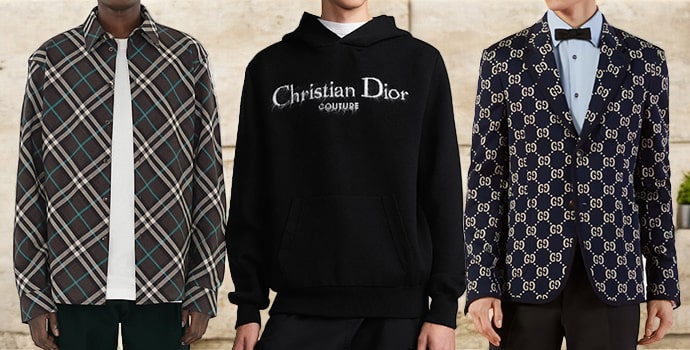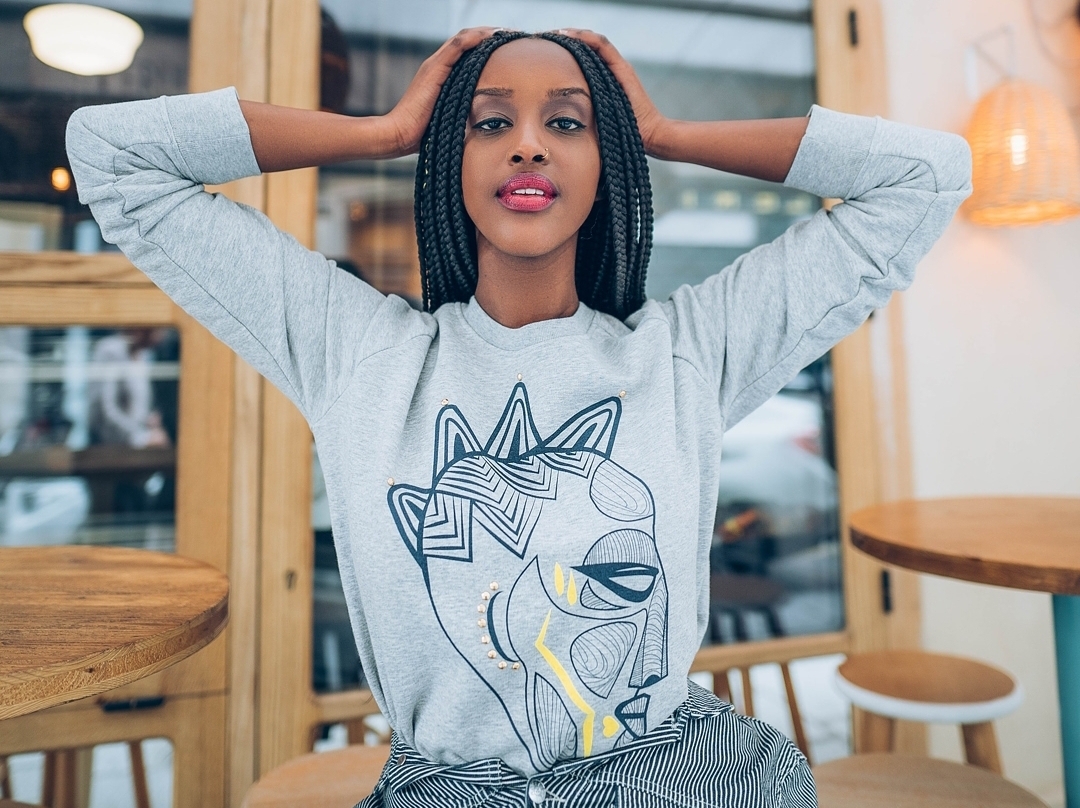The Importance of Sustainable Clothing: How It Impacts the Atmosphere and Your Closet
Lasting clothes is significantly recognized for its essential duty in reducing the environmental influence of the rapid apparel industry. By focusing on eco-friendly materials and moral manufacturing techniques, it deals with pressing environmental issues. This shift not only profits the earth however also affects customer selections, causing an extra thoughtful approach to wardrobe management. Understanding these dynamics elevates important questions concerning style's future and individual responsibility in shaping it.
The Environmental Footprint of Fast Fashion

Advantages of Lasting Materials
Lasting materials supply considerable advantages, specifically with environment-friendly textile choices that lessen ecological injury. These materials additionally show sturdiness and long life, minimizing the demand for frequent substitutes. As a result, they add to a much more lasting garment industry and advertise accountable consumer actions.
Eco-Friendly Fabric Choices
While the apparel industry has actually long been connected with rapid patterns and environmental damage, the rise of environmentally friendly textile choices offers a transformative opportunity. Sustainable products such as organic cotton, hemp, and Tencel have actually acquired popularity because of their lower environmental influence. These materials are frequently created without harmful pesticides and call for much less water, decreasing their carbon footprint - Branded Clothing. In addition, numerous environmentally friendly fabrics are eco-friendly, adding to a circular economic situation by minimizing waste. Picking lasting materials not just supports ecologically accountable practices but additionally advertises healthier environments. As consumers end up being a lot more knowledgeable about their purchasing power, the demand for environment-friendly fabrics motivates brands to innovate and embrace even more sustainable manufacturing techniques, inevitably benefiting the earth and future generations
Durability and Longevity Benefits
Many customers are progressively acknowledging the durability and durability advantages of sustainable products in their clothing selections. Unlike standard textiles, lasting materials such as natural cotton, hemp, and recycled polyester are crafted to stand up to deterioration, leading to garments that last longer. This minimized regularity of replacement not only saves customers money gradually however also reduces waste created by quick style. Furthermore, lasting apparel usually uses eco-friendly production techniques that improve textile stamina, adding to a reduction in the total carbon footprint. By purchasing long lasting garments, customers can cultivate an extra lasting wardrobe while enjoying high-grade items that maintain their aesthetic and performance with time. As a result, durability and durability stand as key benefits of selecting lasting products.
Reducing Waste With Lasting Practices
Reducing waste in the apparel industry can be achieved via ingenious methods such as upcycling and repurposing products. In addition, embracing minimal closet strategies urges customers to focus on top quality over amount, inevitably lowering clothing usage. With each other, these techniques add considerably to a much more sustainable clothes design.
Upcycling and Repurposing Products
Upcycling and repurposing materials have actually arised as ingenious methods in the fashion business, transforming thrown out textiles right into useful brand-new items. This strategy not just decreases waste but likewise motivates creativity and individuality in clothing layout. By taking old garments and products, developers can produce one-of-a-kind pieces that mirror personal style while decreasing the demand for new sources. Furthermore, upcycling usually needs less power and water contrasted to traditional production procedures, greatly reducing the environmental impact of style. As customers become extra conscious of sustainability, the appeal of upcycled clothing proceeds to climb, advertising a circular economic situation. Ultimately, these methods add to a much more sustainable future, where fashion focuses on ecological health and wellness over fast production and intake.

Minimal Wardrobe Approaches
As individuals increasingly look for to minimize their ecological impact, adopting minimalist closet techniques has gained traction as a reliable strategy to sustainable fashion. These strategies emphasize quality over quantity, encouraging consumers to curate a smaller sized collection of flexible, sturdy clothes. By concentrating on classic pieces that can be mixed and matched, individuals can lower the frequency of purchases and ultimately reduce waste.Additionally, minimalism promotes conscious consumption, prompting consumers to assess the honest and ecological effects of their options. This approach not just cultivates an extra sustainable way of life but likewise simplifies daily decision-making relating to outfit. As individuals accept minimalist principles, they add to a fashion society that values sustainability and responsible consumerism, eventually leading to a more eco-conscious society.
The Role of Ethical Labor in Lasting Fashion
While several consumers are progressively familiar with the environmental repercussions of their clothes options, the significance of ethical labor practices in lasting style can not be neglected. Moral labor incorporates fair incomes, safe click site working problems, and respect news for workers' civil liberties, developing the foundation of responsible fashion manufacturing. Brand names that prioritize honest labor not just uplift neighborhoods yet also established a standard for accountability in the industry.Moreover, the combination of honest methods promotes transparency, making it possible for consumers to make enlightened choices regarding their acquisitions. This practice contrasts greatly with rapid fashion's unscrupulous labor models, which frequently prioritize revenue over people. By supporting companies devoted to honest labor, consumers add to a system that values human dignity alongside ecological sustainability. Subsequently, ethical labor is not merely an add-on; it is essential to the broader objective of sustainable fashion, making sure that the quest for eco-friendliness does not come with the expense of civils rights.
The Influence of Lasting Apparel on Carbon Emissions
Lasting apparel has the possible to considerably minimize carbon discharges connected with the style sector. Typical garment manufacturing adds significantly to greenhouse gas discharges, mainly as a result of energy-intensive production processes and using non-renewable resources. In comparison, sustainable fashion concentrates on eco-friendly materials, such as natural cotton or recycled fibers, which often require less power to produce.Moreover, sustainable brands often tend to take on more effective production techniques, lessening waste and lowering total exhausts. By prioritizing durability and ageless design, lasting clothing motivates customers to get much less regularly, additional reducing the carbon impact associated with overconsumption.Additionally, lots of sustainable brand names are committed to openness in their supply chains, enabling customers to make informed options that straighten with their values. Inevitably, shifting towards lasting clothing can bring about a substantial reduction in carbon exhausts, adding to a healthier world and an extra sustainable future for the style sector.
Supporting Regional Economies With Lasting Selections
The change toward sustainable apparel not just addresses environmental issues however additionally substantially advantages neighborhood economic climates. By picking sustainable style, consumers frequently sustain neighborhood artisans and local business, boosting community resilience. These enterprises generally run on a smaller sized scale, focusing on workmanship and ethical practices over mass production.Investing in locally made lasting garments cultivates job creation and promotes financial growth within communities. As consumers become much more familiar with the environmental effect of their purchases, they progressively choose products that reflect their values. This demand moved here encourages local suppliers to adopt sustainable techniques, adding to a round economy.Moreover, sustaining regional organizations reduces transportation emissions, aligning with eco-conscious consumer habits. The interconnectedness of lasting garments and neighborhood economic situations highlights the vital function that specific options play in advertising both financial and environmental health and wellness. By fostering these neighborhood links, communities can grow while likewise functioning in the direction of an extra lasting future.
Changing Your Closet: Tips for a Lasting Wardrobe
As people seek to lower their environmental influence, transforming a storage room into a lasting wardrobe comes to be a vital step. One effective approach is to assess existing clothes, keeping just products that are used frequently and that align with sustainability goals. Prioritizing top quality over amount is vital; purchasing resilient pieces from environment-friendly brands can substantially reduce waste.Additionally, including second-hand products can revive a wardrobe while reducing ecological damage. Organizing clothes swaps with good friends or contributing extra things can additionally promote sustainability.When buying, people ought to look for materials that are organic, recycled, or biodegradable, and stay clear of rapid fashion sellers - Branded Clothing. Exercising mindful intake by thoughtfully considering each acquisition can add to a more sustainable way of living. By applying these suggestions, one can develop a closet that shows personal design while sustaining ecological stewardship
Frequently Asked Questions
Exactly How Can I Recognize Sustainable Clothes Brands?
To determine lasting clothing brand names, one must investigate materials made use of, examine for accreditations like Fair Profession, and analyze the brand name's transparency about their manufacturing processes, labor methods, and ecological effect, making certain ethical and environment-friendly practices are focused on.
What Are the Prices Associated With Lasting Fashion?
The prices connected with lasting style can vary significantly. Greater manufacturing expenditures, ethical sourcing, and environment-friendly products usually lead to raised market prices, which may hinder some customers while appealing to eco mindful shoppers.
Can Sustainable Apparel Be Trendy and Trendy?
Lasting clothes can indeed be stylish and fashionable. Designers significantly focus on innovative products and honest production approaches, showing that fashion and sustainability can exist side-by-side. Consumers now have varied options that mix appearances with ecological consciousness.
Just How Does Washing Clothes Affect Their Sustainability?
Cleaning clothes significantly impacts sustainability by consuming water and power, adding to contamination, and creating microplastic release. Regular cleaning can degrade materials, shortening their life expectancy and raising the need for substitutes, ultimately intensifying ecological problems.
What Is the Lifespan of Sustainable Apparel Contrasted to Fast Fashion?
The lifespan of sustainable apparel normally goes beyond that of fast style items, often lasting numerous years because of high quality materials and workmanship. On the other hand, quick style garments might degrade rapidly, demanding more constant replacements. Sustainable apparel is increasingly recognized for its vital function in minimizing the ecological impact of the rapid style industry. While many customers are significantly conscious of the ecological repercussions of their garments selections, the relevance of honest labor methods in lasting style can not be overlooked. Branded Clothing. Lasting apparel has the possible to substantially lower carbon exhausts associated with the style sector. In comparison, sustainable fashion concentrates on eco-friendly products, such as natural cotton or recycled fibers, which often require much less power to produce.Moreover, sustainable brands often tend to embrace much more efficient production techniques, lessening waste and lowering overall emissions. By focusing on longevity and ageless design, lasting apparel motivates consumers to buy much less often, more reducing the carbon impact connected with overconsumption.Additionally, many lasting brands are committed to openness in their supply chains, enabling customers to make informed choices that line up with their values